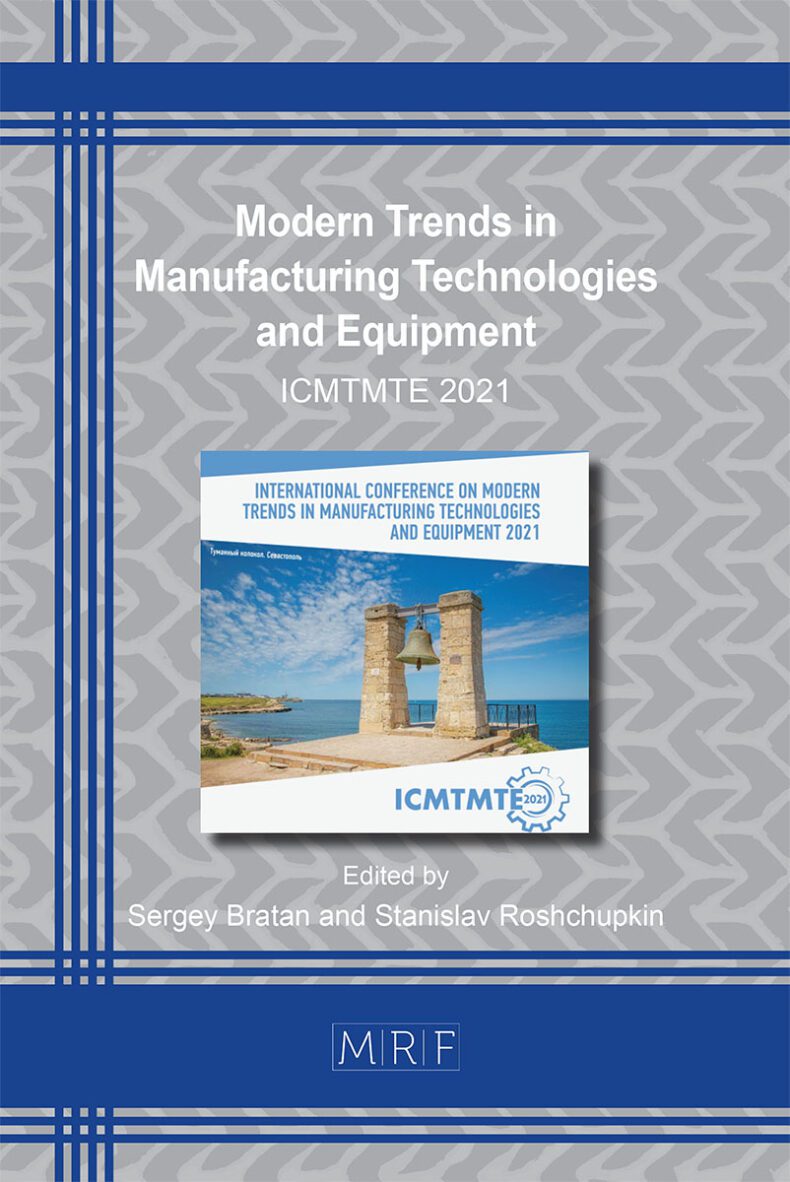Contemporary Methods for Production of Ultramarine
A.V. Vyboishchik, M.Yu. Popov
download PDFAbstract. The article describes the features of ultramarine, its modifications, viz. ultramarine blue. The requirements for ultramarine blue grades are observed, the one-stage and two-stage technologies for the production of ultramarine blue are described, the advantages and disadvantages of both methods are listed, new recommendations for the production of ultramarine blue are offered.
Keywords
Ultramarine, Ultramarine Blue, Ultramarine Green, Kaoline, Diatomite, Malleablizing
Published online 1/5/2022, 4 pages
Copyright © 2022 by the author(s)
Published under license by Materials Research Forum LLC., Millersville PA, USA
Citation: A.V. Vyboishchik, M.Yu. Popov, Contemporary Methods for Production of Ultramarine, Materials Research Proceedings, Vol. 21, pp 247-250, 2022
DOI: https://doi.org/10.21741/9781644901755-43
The article was published as article 43 of the book Modern Trends in Manufacturing Technologies and Equipment
![]() Content from this work may be used under the terms of the Creative Commons Attribution 3.0 licence. Any further distribution of this work must maintain attribution to the author(s) and the title of the work, journal citation and DOI.
Content from this work may be used under the terms of the Creative Commons Attribution 3.0 licence. Any further distribution of this work must maintain attribution to the author(s) and the title of the work, journal citation and DOI.
References
[1] Gerhard Pfaff, Ultramarine pigments, Physical Sciences Reviews, 2021. https://doi.org/10.1515/psr-2020-0201
[2] Pawel Rejmak, Structural, Optical and Magnetic Properties of Ultramarine Pigments: A DFT Insight, The Journal of Physical Chemistry C. 122(51) (2018). https://doi.org/10.1021/acs.jpcc.8b09856
[3] Stanislaw Kowalak, Aldona Jankowska, Sabina Ł, Preparation of various color ultramarine from zeolite A under environment-friendly conditions, Catalysis Today. 90(1) (2004) 167-172. https://doi.org/10.1016/j.cattod.2004.04.023
[4] Robert Coenraads, Claudio Canut de Bon, Lapis Lazuli from the Coquimbo Region, Chile, Gems and Gemology. 36(1) (2000) 28-41. https://doi.org/10.5741/GEMS.36.1.28
[5] Jose Pedro Sancho, Oscar Restrepo, P. García, J. Ayala, B. Fernández, Luis Felipe Verdeja, Ultramarine blue from Asturian “hard” kaolins, Applied Clay Science. 41(3-4) (2008) 133. https://doi.org/10.1016/j.clay.2007.10.005
[6] Vahideh Tajer Kajinebaf, Fereshteh Rezaeian, Masoud Rajabi, Saeid Baghshahi, Replacing nano-clay for kaolin in ultramarine pigments, Pigment and Resin Technology. 43(1) (2013). https://doi.org/10.1108/PRT-03-2013-0020
[7] N. Gobeltz, A. Demortier, J.-P. Lelieur, A. Lorriaux, C. Duhayon, Presence of iron(III) impurities in ultramarine green pigments, New Journal of Chemistry. 20(1) (1996) 19-22.
[8] Eleanor Cato, Antonella Rossi, Nadim C Scherrer, Ester S.B Ferreira, An XPS study into sulphur speciation in blue and green ultramarine, Journal of Cultural Heritage. (2017). https://doi.org/10.1016/j.culher.2017.09.005
[9] Costanza Miliani, Alessia Daveri, Bruno Brunetti, Antonio Sgamellotti, CO2 entrapment in natural ultramarine blue, Chemical Physics Letters. 466(s 4–6) (2008) 148–15. https://doi.org/10.1016/j.cplett.2008.10.038
[10] Eleanor Cato, Nadim C Scherrer, Ester S.B Ferreira, Raman mapping of the S 3 − chromophore in degraded ultramarine blue paints, Journal of Raman Spectroscopy. 48(11) (2017). https://doi.org/10.1002/jrs.5256
[11] Lucy Goncalves, D. Moronta, Freddy Ocanto, Carlos Linares, Synthesis of ultramarine blue type pigments using several raw materials, Revista de la Facultad de Ingenieria. 25(1) (2010) 25-31.
[12] Dafna Arieli, David E. W. Vaughan, D Goldfarb, New Synthesis and Insight into the Structure of Blue Ultramarine Pigments, Journal of the American Chemical Society. 126(18) (2004) 5776-88. https://doi.org/10.1021/ja0320121
[13] A. I. Shereshevsky, T. P. Unanjanc, G. Ya. Baharovsky, Himicheskie tovary (Chemical Products) (Goshimizdat, Moscow, 1961)
[14] O. V. Orlova, T. N. Fomicheva, Tehnologiya lakov i krasok (Technology of Varnishes and Paints) (Himiya, Moscow, 1990)
[15] A.U. Rahman, F. Khan, M. Riaz, A. Latif, Synthesis of blue pigment from kaolin, Pakistan Journal of Scientific and Industrial Research. 52(1) (2009) 15-17.
[16] Ashok Borhade, G. Dholi Arun, G. Wackchaure Sanjay, R. Tope Dipak, Synthesis of intense blue ultramarine from coal fly ash as an aluminosilicate source under environment- Friendly conditions, Research Journal of Chemistry and Environment. 17(1) (2013) 14-20.
[17] Ashok Borhade, Tushar Kshirsagar, Arun G. Dholi, Novel synthesis of ultramarine blue from waste coal fly ash via thiocyanate aluminosilicate sodalite, Journal of Sulfur Chemistry. (2016). https://doi.org/10.1080/17415993.2016.1173215
[18] Yin-Hsiu Hsiao, yu-How Shen, Dah-Tong Ray, Synthesis of Ultramarine from Reservoir Silts, Minerals. 7(5) (2017). https://doi.org/10.3390/min7050069
[19] Haibo Wang, Shan Zhang, Hu Songyuan, Zhiwei Zhen, Mario A Gomez, Shuhua Yao, A systematic study of the synthesis conditions of blue and green ultramarine pigments via the reclamation of the industrial zeolite wastes and agricultural rice husks, Environmental Science and Pollution Research. 27(2–3) (2020). https://doi.org/10.1007/s11356-020-07624-8
[20] D. G. Booth, S. E. Dann, Mark T. Weller, The effect of the cation composition on the synthesis and properties of ultramarine blue, Dyes and Pigments. 58(1) (2003) 73-82. https://doi.org/10.1016/S0143-7208(03)00037-8
[21] Andreas A. Landman, Danita de Waal, Fly ash as a potential starting reagent for the synthesis of ultramarine blue, Materials Research Bulletin. 39(4-5) (2004) 655-667. https://doi.org/10.1016/j.materresbull.2003.12.002































